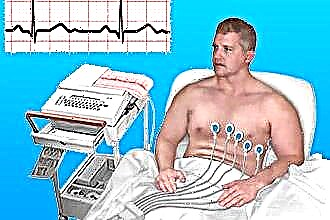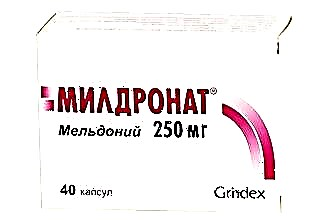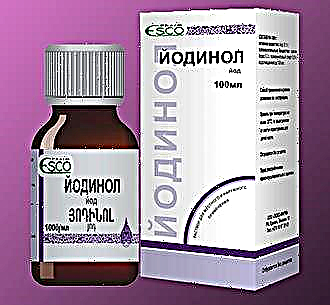 Throat infections in otolaryngology are quite common, because the tonsils are in the oropharynx - the first protective formations that take the attack on themselves.
Throat infections in otolaryngology are quite common, because the tonsils are in the oropharynx - the first protective formations that take the attack on themselves.
The tonsils are lymphoid clusters that fight infection. Normally, the tonsils can increase, which indicates an acute course of infectious pathology. However, after the death of microbes, they return to their previous size.
Most often, children suffer from infectious diseases of the throat, since they do not have such a strong immune system, and they are much more likely to come into contact with sick peers.
This is associated with an increase in the glands and the development of adenoids in children, because the tonsils, with frequent attacks of pathogens or the presence of chronic infection, hypertrophy, disrupting breathing through the nose.
Often, it is the hypertrophied lymphoid formations that become the source of chronic infection in the oropharynx.
When a throat infection is suspected, the symptoms depend on the type of pathogenic microorganisms that have multiplied to develop the disease. These can be bacteria, fungi, and viruses. They affect the lining of the throat and cause inflammation and clinical signs.
Bacterial infection
Infectious diseases of the throat caused by bacteria have more severe symptoms than viral pathology. Most often, the disease develops due to the activation of staphylococci, streptococci, haemophilus influenzae or pneumococci.
Streptococci normally live in the human body without causing the development of diseases. However, with a decrease in immune defense during hypothermia, exacerbation of chronic pathology or allergy, the opportunistic flora is activated and begins to multiply.
Pathogens can cause scarlet fever, rubella, measles, whooping cough, sore throat, or erysipelas. If not treated in time, complications such as:
- otitis media (with damage to the middle ear section);
- sinusitis (inflammation of the paranasal sinuses);
- retropharyngeal abscess (as complications of advanced tonsillitis);
- bronchitis, pneumonia;
- lymphadenitis;
- endocarditis, myocarditis;
- glomerulonephritis;
- polyarthritis;
- meningitis;
- sepsis;
- osteomyelitis.
Complications of the disease develop if throat infections become generalized. The spread of pathogens with the blood flow occurs, forming infectious foci in the internal organs. Released toxins affect the heart muscle, kidney tissue, articular structures, blood elements and skin.
Streptococcus is transmitted through the air, through household items, dirty hands, and by coughing from a sick person. Bacterial throat disease often manifests itself as a sore throat, which is characterized by:
- febrile hyperthermia;
- severe pain when swallowing;
- plaque on the tonsils;
- suppurating follicles in the tonsils;
- purulent discharge in the lacunae;
- malaise;
- decreased appetite.
With the development of complications, it may appear:
- ear pain, hearing loss as a sign of otitis media;
- heaviness behind the breastbone, interruptions in the work of the heart - with myocarditis, endocarditis;
- joint pain, limitation of their mobility - with polyarthritis;
- pain in the lumbar region, during urination - with kidney damage;
- pain in the neck, the formation of a purulent cavity or diffuse purulent inflammation - with abscesses, phlegmon.
A throat infection is diagnosed with throat swabs. Under a microscope or bacteriological analysis, the type of pathogenic microorganisms and their resistance to antibacterial drugs are established.
Staphylococcus aureus has several types (golden, epidermal, and saprophytic). It refers to the conditionally pathogenic flora of the body, which only under certain conditions leads to the development of the disease. Infection occurs from a sick person through air, dust or household items.
The pathogen can cause sore throat, tonsillitis, skin pathology (furunculosis, pyoderma), inflammation of the bronchopulmonary system, intestines, brain abscess, sepsis, or affect internal organs, forming infectious foci in them.
Symptoms are pain in the pharynx on swallowing, fever, cough, and intoxication symptoms.
For diagnostics, it is enough to carry out an ELISA, examine smears from the throat and perform a bacterial culture, in which a culture of staphylococci grows.
Fungal diseases
A fungal infection of the throat often leads to the development of pharyngomycosis. It belongs to a chronic pathology, as it is difficult to treat. Also, fungi can cause rhinomycosis, otomycosis or laryngomycosis.
In most cases, the cause of the disease is candida fungi, but mold damage is possible. Some types of fungi belong to conditionally pathogenic flora, therefore, they can normally be present on mucous membranes.
Triggers for their activation can be long-term antibiotic therapy, dental caries, chronic diseases of the nasopharynx and pharynx, diabetes and a temporary decrease in immunity after hypothermia or exacerbation of a chronic disease.
Fungal infections in the throat are manifested by:
- curdled bloom on the mucous membrane of the oropharynx;
- dry mouth;
- burning sensation.
Microscopic examination is used in diagnostics.
Viral pathology
Throat infections can be caused by viral pathogens. When the virus enters the body, it begins to multiply, and typical symptoms appear:
- nasal congestion, rhinorrhea;
- body aches;
- fever (less persistent in comparison with bacterial diseases);
- sore throat;
- lacrimation;
- sneezing;
- malaise.
Pathogens are transmitted by air, sneezing or kissing. Infection through household items is not excluded.
The likelihood of infection with viruses in closed, poorly ventilated rooms during contact with a sick person significantly increases.
To distinguish a bacterial disease from a viral one, it is enough to conduct a study of swabs from the pharynx or nose.
Separately, I would like to say about herpes infection, which is often diagnosed in children. It causes stomatitis or sore throat. In adults, the infection manifests itself as a rash on the lips, nose, or eyes.
 Symptoms develop after the activation of the herpes simplex virus of the first type during the initial infection or its exacerbation against the background of a decrease in immunity. Children have:
Symptoms develop after the activation of the herpes simplex virus of the first type during the initial infection or its exacerbation against the background of a decrease in immunity. Children have:
- muscle pain;
- subfebrile condition;
- sore throat, ears, or eyes;
- blistering rashes.
The child's fragile immune system defeats a viral infection in 10-14 days, while bacterial diseases can bother for another week with residual manifestations (coughing, some nasal voice).
Treating an infection
When a throat infection is confirmed, treatment is prescribed based on the type of pathogen. In case of a bacterial disease, bacterial sowing of material taken from the oropharynx is carried out, which makes it possible to determine the resistance of the pathogen to antibacterial agents. Taking into account the results of the antibioticogram, antibiotics are prescribed:
- penicillin series - Augmentin, Flemoklav, Amoxicillin;
- cephalosporin group - Cefepim, Cefuroxime, Cefataxime;
- macrolides - Sumamed, Azitrox, Klacid.
Antibacterial drugs are used in tablet form, in the form of a powder - for intramuscular administration, or a solution - for intravenous administration. The choice is made solely by the doctor based on the severity of the disease.
In the case of a viral illness, you should not take antibiotics, as many of us do, as soon as they see 38 degrees on the thermometer. Firstly, antibacterial agents are not effective for viral infections, and secondly, indulging in antibiotics can develop resistance to them.
As a result, in the more severe case of bacterial disease, they will not have a detrimental effect on bacteria.
With a viral pathology of the throat, treatment should include taking antiviral drugs (Tsitovir-3, Remantadin, Amiksin, Arbidol, Aflubin). Some antiviral medicines have an immunomodulatory effect, which is also necessary in case of illness. Fluconazole, Intraconazole or Pimafucin are prescribed for fungal infections of the mucous membranes. The duration of the course is determined by the doctor based on the results of the examination.
Local therapeutic effect is provided with the help of:
- solutions for rinsing the oropharynx - Miramistin, Furacilin, Chlorhexidine;
- spray for irrigation of the mucous throat and tonsils - Bioparox, Givalex, Cameton, Ingalipt, Chlorophyllipt, Tantum Verde;
- lozenges - Falimint, Faringosept, Decatilen, Strepsils.
In addition, for medicinal purposes, decoctions of herbs (chamomile, oak bark, sage) can be used to prepare rinse solutions or inhale. Do not forget about vitamin therapy, regular ventilation, wet cleaning in the room, good nutrition and increased drinking regime.
The defeat of the throat with an infection is very common, so you need to immediately start treating the disease, preventing the chronicity of the infectious and inflammatory process. It is especially important for parents to completely heal the child in order to avoid surgery to remove the glands or adenoids from the child.



